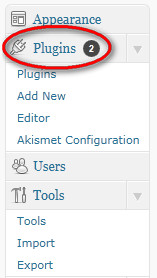We spoke many times on this blog of the power of Facebook. Now, Affiliate Growth Council member and Leader Board fixture, Tissa Godavitarne has gone one step farther by creating an app to help you with your GDI opportunity, no matter your sponsor or earnings.
I joined GDI as an affiliate back in August of 2008. Over the years, I’ve built a substantial residual income with GDI. Most of you have probably seen my name (Tissa Godavitarne) on the weekly GDI leaderboards. Without a doubt, the number one question I’m always asked by GDI affiliates is, “Tissa, how can I duplicate your success with GDI?”. That has always been a tough question to answer. What works for me, may not work for you, and vice versa. But with more than 500 million active users, Facebook can work for everyone! That’s why I created the Facebook app, GDIWatch.
GDIWatch leverages “social proof” and the viral power of Facebook to build your GDI downline. Here’s how it works: Every couple of days, GDIWatch will automatically post real-time earnings by GDI leaders on your Facebook wall (featuring your affiliate link). These wall posts let your Facebook friends – and their friends – see that real people are making real money with GDI. This is known as social proof, and it’s a proven marketing strategy. So even if you’re just starting out, GDIWatch allows you to leverage the success of GDI leaders to build your GDI downline.
GDIWatch is 100% free. It’s also free of any advertising, cross-promotion or cross-sponsoring. GDIWatch will work for you regardless of whose downline you’re in, or what GDI “system” you may be using. So stay with your current sponsor and system, but add GDIWatch (and Facebook!) to your marketing arsenal. Help your downline by telling them about GDIWatch as well (use the ‘Contact Downline’ feature in your GDI back office). Since GDIWatch is free and simple to use, it can be easily duplicated by your downline. Remember, when your downline earns, you earn!
Start leveraging social proof and the viral power of Facebook to build your GDI downline. Start using GDIWatch today.
~ Tissa Godavitarne
*GDIWatch is not sponsored nor created or maintained by Global Domains International, Inc.

